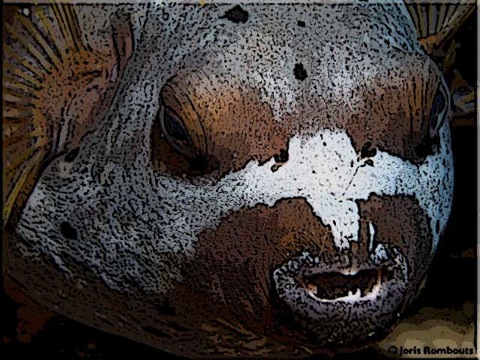
- Check the sub-map for the specimen information files -
PUFFERFISH - TETRAODONTIDAE
PUFFERFISH - TETRADONTIDAE
The pufferfish family is divided into two sub-family. The Tetraodontinae, which are larger than the Canthigasterinae, which are smaller and are a different shape. ‘Puffers’ as most people call them are slow but skill-full swimmers. They are able to rotate like a helicopter and swim backwards. When feeling threatened, they are able to enlarge their body by sucking in water into a stomach chamber in an attempt to scare the intruder. Sadly though there are always those people who like to catch pufferfish because they find they look funny and photogenic when they blow themselves up. Situations like this cause a lot of stress for the fish and can kill them. Pufferfish live alone or in small groups and mostly swim close to the substrate. They prefer protected reefs and feed on crustaceans and fish. No information is available at present about their reproduction. Be aware that the larger specimen are able to bite off a finger in one go. Pufferfish also produce a potent poison (Tetrodoxin) which blocks the nervous system in a few minutes and can be fatal when ingested. This Tetrodoxine, which is formed by bacteria in red algae, can also be found in certain gobies, slugs, crustacean, starfish and the blue ringed octopus.
PORCUPINEFISH - DIODONTIDAE
Porcupinefish, like their relatives the pufferfish, are not strong swimmers but are also able to rotate like a helicopter. They feed on shells, sea urchins and crustaceans which they break into pieces with their strong jaws and teeth. When feeling threatened, they inflate themselves with water so the numerous spines on the body point outwards. Greedy predators will not even think to swallow a porcupinefish in this condition. Only with the Chilomycterus and Cyclichthys species do the spines stand up permanently. Reproduction happens during sunset. Males will try to push a female towards the surface where they will do their best to fertilize the out-coming eggs.
- Check the sub-map for the specimen information files -

